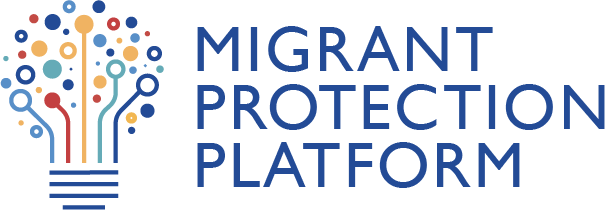This document offers guidance on incorporating ethical recruitment practices into both new and existing Comprehensive Information and Orientation Programmes (CIOP). Aimed at CIOP professional trainers, labour recruiters, and employers, it facilitates the effective implementation of Pre-Employment, Pre-Departure, Post-Arrival, and Pre-Return Orientation...
Economic Opportunities and Labour Rights
Displaying 1 - 20 of 553
Debt and indebtedness are central to the lives of migrants from South-East Asia. Debt and the Migration Experience focuses attention on the role of debt in the migration process. Indebtedness and other forms of financial insecurity that return migrants experience affects the migration as well as sustainable return of migrant. This report understands the...
This qualitative study provided a platform for the victims' voices to be heard as they described their actual experiences. h focused on generating an in-depth understanding on child sex trafficking in the tourism sector in Sri Lanka. The research aimed to provide new knowledge on main research questions of (a) What are the experiences of child victims of...
The 2023 Return and Reintegration Key Highlights were released today, presenting IOM's core initiatives in assisting migrants to return voluntarily to their countries.
This document provides a comprehensive summary of the trends, developments and associated activities concerning the International Organization for Migration's (IOM) return and reintegration efforts in 2023. The report includes detailed statistical summaries at both regional and country levels. Additionally, it highlights innovative approaches implemented by...
The Eastern and Horn of Africa region is one of the world’s most dynamic areas in terms of migration, driven by a complex interplay of economic, social, and security factors. Migrants and mobile populations in this region face numerous challenges in accessing essential healthcare services, including the absence of migrant-inclusive healthcare laws and...
Gender is now increasingly becoming central to discussions of the causes and consequences of migration. Given the widespread acknowledgement that the "feminization" of migration has changed migration patterns and processes worldwide, Gender affects migration motivations, migration patterns, and migration behaviors. This publication explores the critical...
In a large research study, the Research Centre of the Federal Office for Migration and Refugees (BAMF) and IOM joined forces to assess the return and reintegration experiences of almost 1,000 returnees who received assistance from the StarthilfePlus programme. The research looks at reintegration processes at the individual level across three dimensions of...
The main repository of the Migrant Protection Platform hosts now over 1,000 publications, all of them available for public consultation.
Freedom of association and collective bargaining (FACB) are fundamental rights of universal scope that should apply to all workers – including migrant workers. The ILO Report on Migrant Workers’ Rights to Freedom of Association and Collective Bargaining supports efforts to fine-tune laws and regulations to promote migrant workers’ FACB rights. It depicts the...
This policy brief summarizes the findings of a joint study by the International Organization for Migration (IOM) and the Stockholm Environment Institute (SEI) that examined links between climate change and labour migration. In Malaysia, the study focused on workers from Bangladesh and Indonesia employed on large estates in Johor and Pahang, the top two palm...
This brief provides insights for businesses on climate change, labour migration and human rights, drawing on a joint study by the International Organization for Migration (IOM) and the Stockholm Environment Institute. The study focused on migrant workers from Bangladesh and Indonesia employed on large palm oil plantations in Peninsular Malaysia, and on...
This policy brief summarizes the findings of a joint study by the International Organization for Migration (IOM) and the Stockholm Environment Institute that examined links between climate change and international labour migration. In Thailand, the study focused on workers from Cambodia and Myanmar employed by smallholder farmers on sugarcane plantations in...
On this International Women's Day, we echo IOM's call for a cohesive commitment to invest in migrant, displaced and diaspora women and girls in all their diversity.
Understanding the needs of migrant workers across the labour migration life cycle, this reintegration manual offers practical guidance on designing, implementing, monitoring and evaluating reintegration assistance programmes for returning migrant workers in South Asia. The target audience for this manual are primarily policymakers, practitioners and service...
This Migration Research Series paper explores the impact of COVID-19 on the return migration of international and internal Indian migrants. The paper provides an overview of return migration dynamics in India and the various vulnerabilities of Indian migrants that were exacerbated during the pandemic. The paper examines the programmes and policies that...
The time to plan and prepare for return and reintegration support is now, as relevant policy and programming discussions are ongoing, in Ukraine, in the European Union (EU), and in hosting countries. The commitments and decisions made at policy and programme level regarding return and reintegration must be coherent, evidence-based and in support of bath...
Climate change is affecting countries around the world, but some of its most intense impacts occur in low- and middle-income countries that have limited resources to prepare and adapt. Many of these countries also welcome back significant numbers of returned migrants. Those returning to areas where climate events and environmental degradation are negatively...
Why are migrant centres so important? Migration journeys are interrupted when people get stranded along their route without any form of protection, shelter, food or health care, and this is when situations become critical. IOM, Governments and partners have set-up migrant centres along the main migratory routes, to provide life-saving assistance. Centres...
Selon la définition de l’Organisation Internationale du Travail, les emplois verts sont des emplois décents qui contribuent à la préservation et à la restauration de l’environnement, soit dans les secteurs traditionnels, soit dans les secteurs verts nouveaux et émergents tels que les énergies renouvelables et l’efficacité énergétique. La mission de l...
